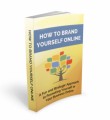Salespage Snapshot:

>>> Click Here To View Full Sales Page…
Table of Contents
THE 3 MAIN REASONS PEOPLE BUY 3
HOW TO INCREASE SALES WITH BUYER TRIGGERS 5
UNDERSTANDING WHAT YOUR BUYERS REALLY WANT 7
GETTING INTO THE MINDS OF YOUR BUYERS 15
FINAL WORDS 19
TOOLS & RESOURCES 20
Sample Content Preview
Once you know and understand exactly what the 3 key reasons are, you can tap into the persuasive power that will instantly skyrocket your sales while putting you in a powerful position of expanding your business and ensuring steady growth over a long-term basis.
If you hadn’t already guessed, this report is all about the power of psychology. But rather than give you a lengthy (and boring) overview of how to use questionable “mind control” tactics to unfairly influence buyers – I’m going to show you how to use legitimate, honest and proven buyer triggers that deliver a powerful message to your buyer base – ensuring that your sales go up and your refund rate goes down. And we’re not only going to uncover those all important three reasons that people buy, we’re also going to figure out how we can get into the minds of potential buyers, so they come to you instead of your competitors.
Are you ready to turn the tables around and put YOUR brand in front of a hungry audience of buyers?
Let’s begin!
How To Increase Sales With Buyer Triggers
Reason #1: “…to make money”
We all want to make more money, right? And so it should be no surprise that “making money” is one of the main reasons why people buy products. Just take a look around the marketplace today and you’ll see just how many products are designed to help people increase their income – and improve their financial situations.
More money means different things to different people: For some it might mean no more worrying about how to pay the bills. Other people may need to make money to fund projects, get businesses and projects off the ground, while for many others, making more money is simply about security and in their ability to provide a better life for their family and future generations.
If your product can help someone make more money, thus improving their financial situation, then you’ll be tapping into one of the key reasons why people purchase products.
Reason #2: “…to save money”
Saving money is just as important to buyers as making money is, and if you browse through both digital and physical product marketplaces you’ll find plenty of information on how people can reduce their overall costs and save more money.
From saving money on household bills to saving money at the pump, if your product can help people to save money you’ll be taking advantage of yet another key buying trigger.
Reason #3: “…to alleviate pain and suffering”
This is a very powerful reason for people to buy because this group of buyers are absolutely desperate for a quick and easy solution to their problems and they are willing to pay or do just about anything to find one.
You may have heard the term “desperate buyers”, and there is an entire market dedicated to this avid group of buyers.
If you cater to a market that consists of buyers looking for prompt answers, fast solutions to personal problems, or relief from emotional or physical pain, showing them how your product will directly alleviate their suffering is a very powerful trigger that will result in increased sales.
Understanding What Your Buyers Really Want
You now understand the 3 key reasons why people buy, so your next step is to uncover what people buy, so that you can create a best selling product in your industry or niche market.
To do this, you need to get into the minds of your potential buyers so you can understand what they’re most interested in and willing to pay money for. It’s like trying to find the need of a particular market. It’ll help you create the best product you possibly can while ensuring that your time is spent wisely creating products that have already proven to sell rather than testing out unknown markets.
Your first step is to conduct market research. The more you know about your audience the better your results will be, both in being able to understand your buyers and your ability to reach out to them.
For example, if you were a photographer who was interested in creating an information product focusing on teaching beginner photography-based techniques, you would want to conduct market research to first determine demand, and second to identify a unique angle or focus that you could use to set your product apart in the market.
This research would also give you access to valuable information about your market as a whole including:
· Competition
· Traffic Sources
· Potential partners
· Existing products
· Leaders (authorities in your market)
Research can make all the difference between spending a lot of time on a product only to get few sales in return, and identifying whether there really is an audience out there for the information you want to publish.
Using Alexa For Market Research
Source: http://www.Alexa.com
You’ve likely heard of Alexa, but have you ever considered it as a tool used to quickly (and thoroughly) analyze your market so you can better understand what people are looking for?
Here’s how to do it:
When you reach the main page of Alexa.com, click on the site info tab.
On this page, you are able to search 5 websites at once in order to compare traffic stats (including volume and history).
For our example, we’ll use the website www.AustralianOpen.com
Alexa gives us a summary of stats for the site and unsurprisingly it reveals the traffic for the site exploded into action at the start of the year, just before the tournament began.
See the screenshot on the next page…
With this information, you can see how trends are an important part of your site research. When you have a potential product in mind for a specific audience, you can explore different sites that already cater to that audience and evaluate overall traffic, interest as well competing websites already in your market.
Over on the right hand side of the page you can see the main high impact search terms that will bring people to the websites you are researching.
You’ll also be able to delve into search analytics including search terms that are rising and falling. This in particular is useful because it pinpoints potential trends. It can tell you what people need.
You can even find out more about the audience that visits this particular site. This is one of the most important features of all, because you can see how each age group compares to the general population.
For example, do more men between the ages of 25-34 visit this site than older men between the ages of 55-64? Do more female visitors go to the site overall than men? As you can see, there is a wealth of information available on Alexa.com that can help you plan products that people are more likely to say yes to. It’s a great tool to use during the early stages of development because the more you know about your intended target audience, the easier it will be to identify a product they will be in need of.
For example, the audience demographics on this site reveal whether the majority of visitors to the Australian Open site have children or not. Could this be useful in your product creation ideas and marketing strategies?
Quantcast.com
Source: http://www.Quantcast.com
In many ways, Quantcast is even more in depth than Alexa.com. You can plug in the name of a site you want to analyze, and see just how many visits it receives per day, week, or month, depending on your needs.
The demographics available on this site tell you a lot about your target audience. Let’s say you want to find out more about the people who use Amazon.com. Scroll down the results page and you’ll find all sorts of valuable demographic information about the audience.
Do more college students use the site than grad school members? How about the earnings of those who visit the site? You’ll get all kinds of answers from Quantcast! Incidentally it’s worth identifying any peak trends that hit your market at certain times of the year. For example gardening will always be more popular during the main growing seasons. November is when things really take off for anyone selling festive products for the Christmas season. These two are obvious, but you’ll find plenty of other ideas as well. Do any of them apply to your audience?
Other Details- 1 Ebook (PDF, DOC), 21 Pages
- 7 Part Autoresponder Email Messages (TXT)
- 1 Squeeze Page (HTML, PSD)
- File Size: 2,690 KB














